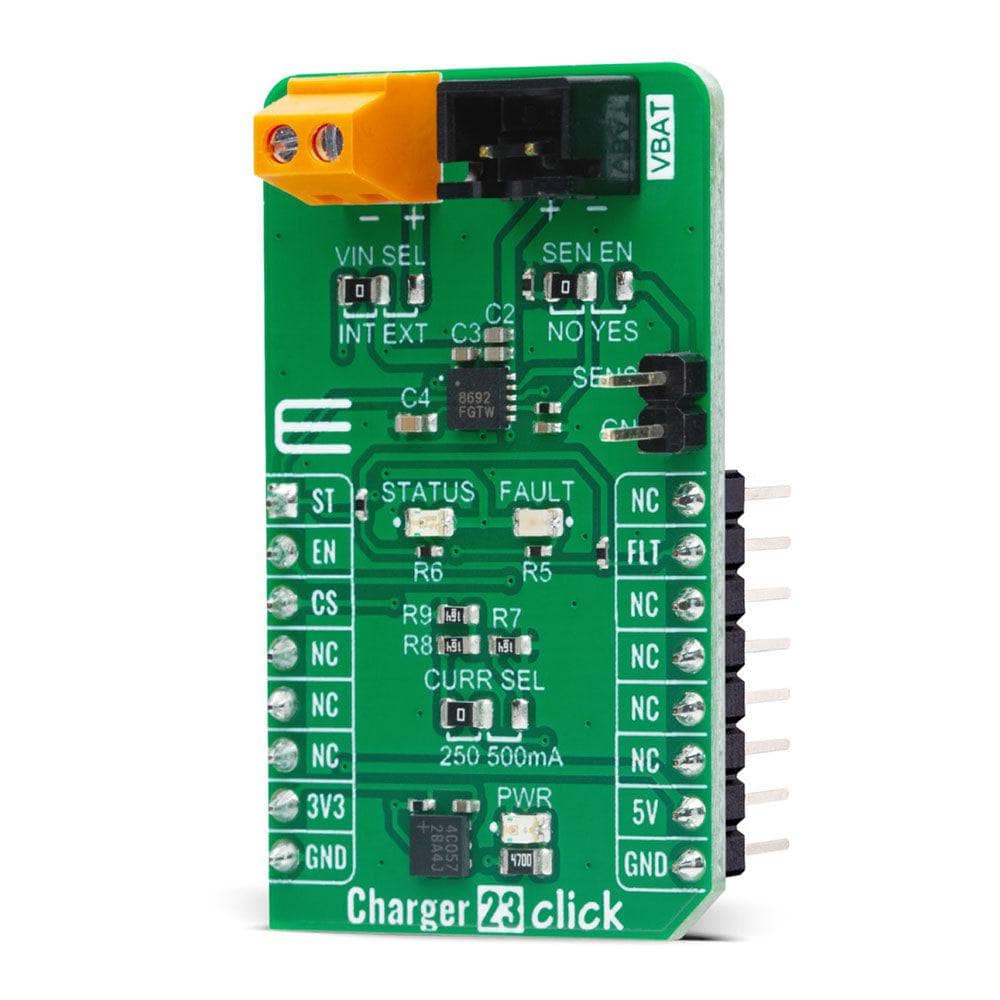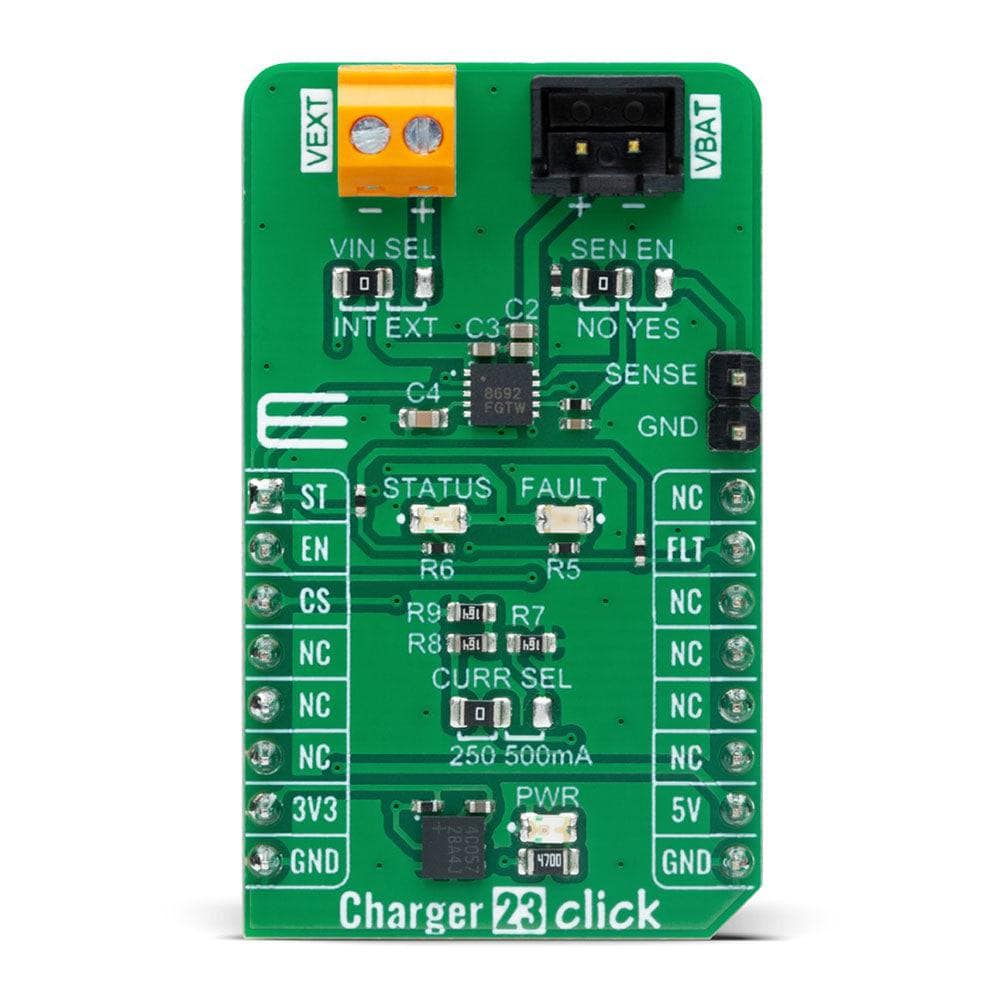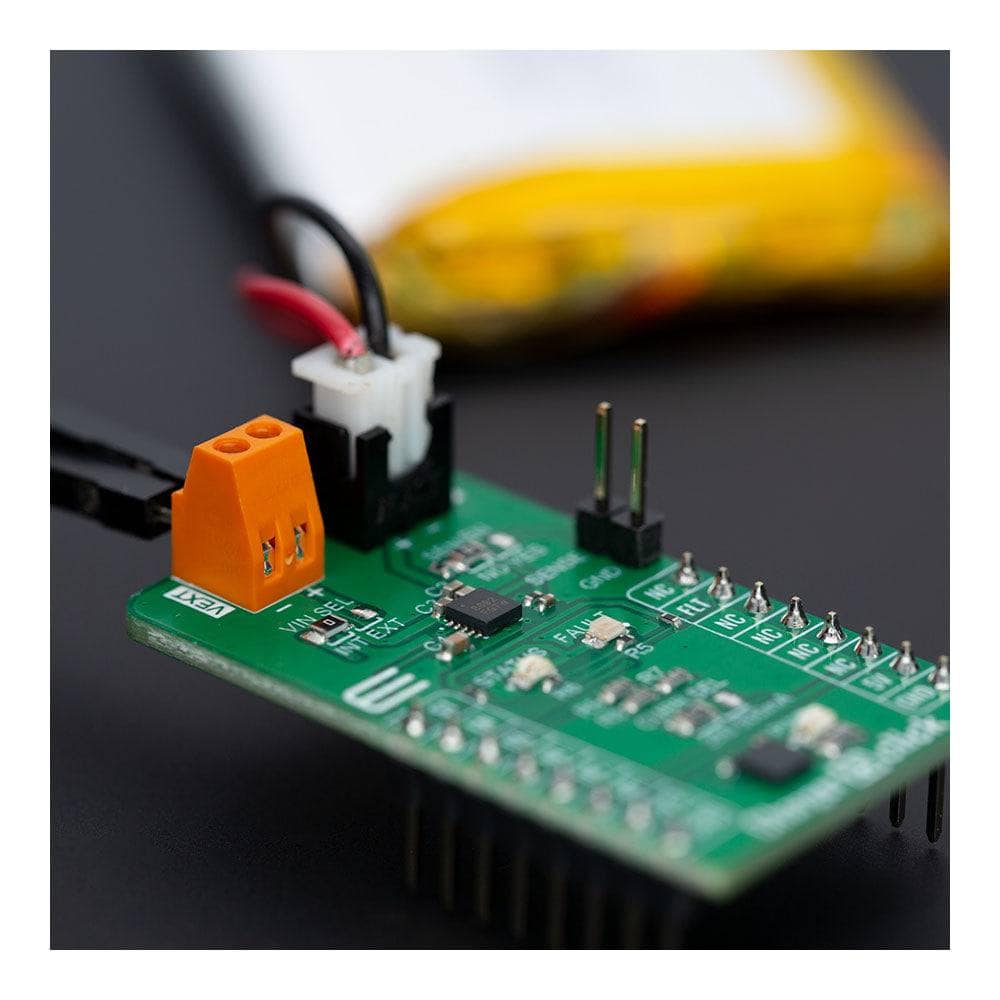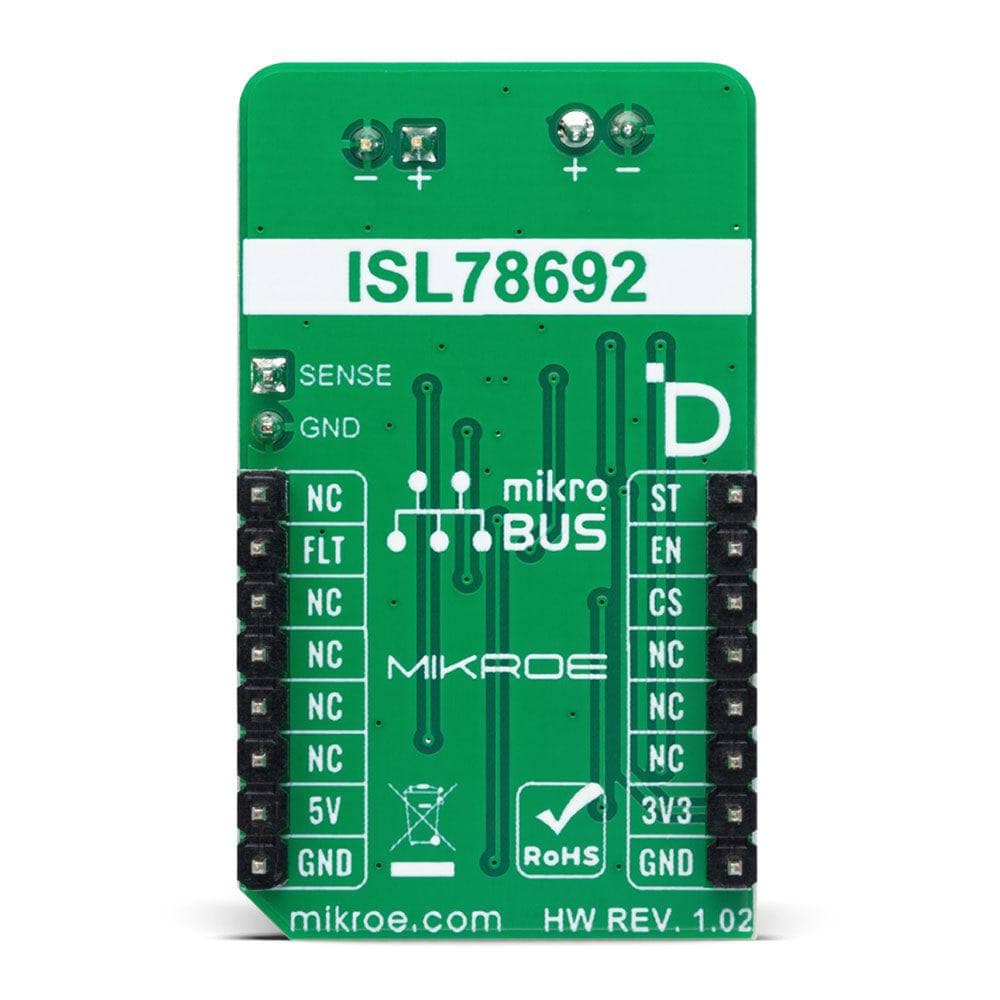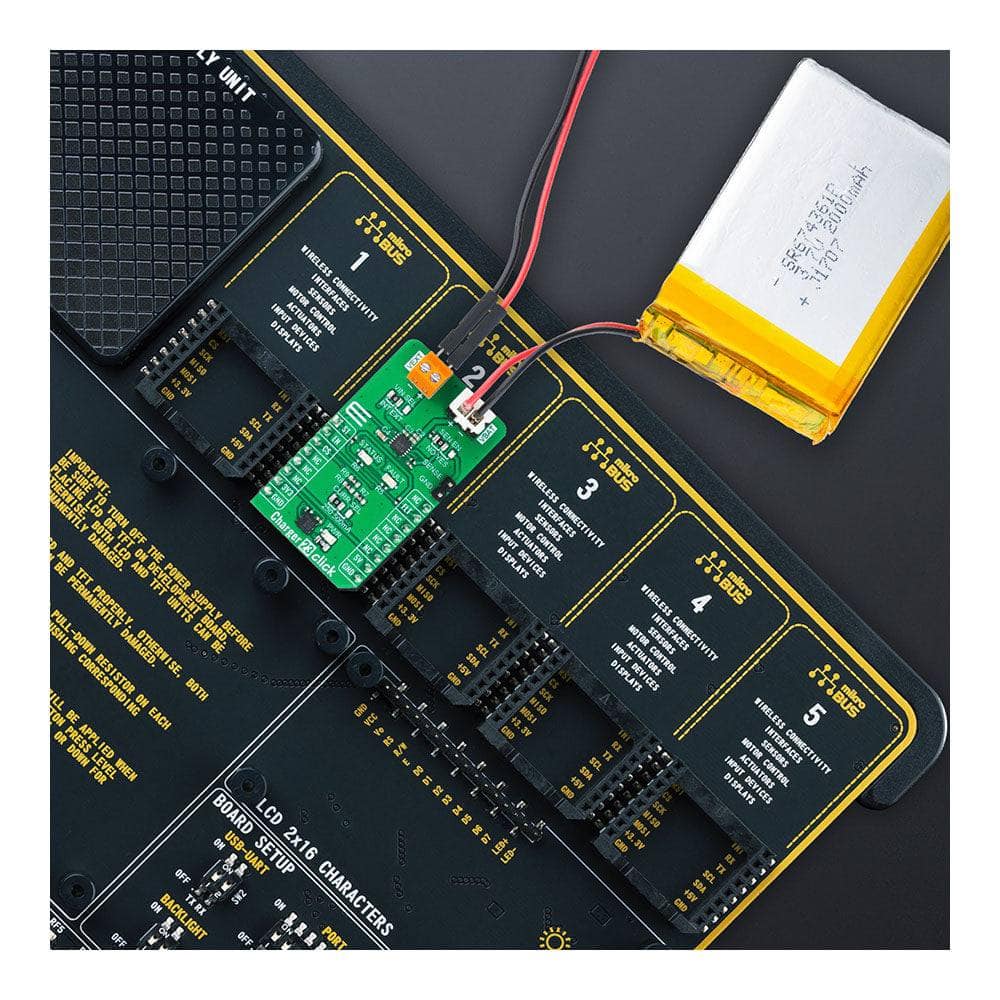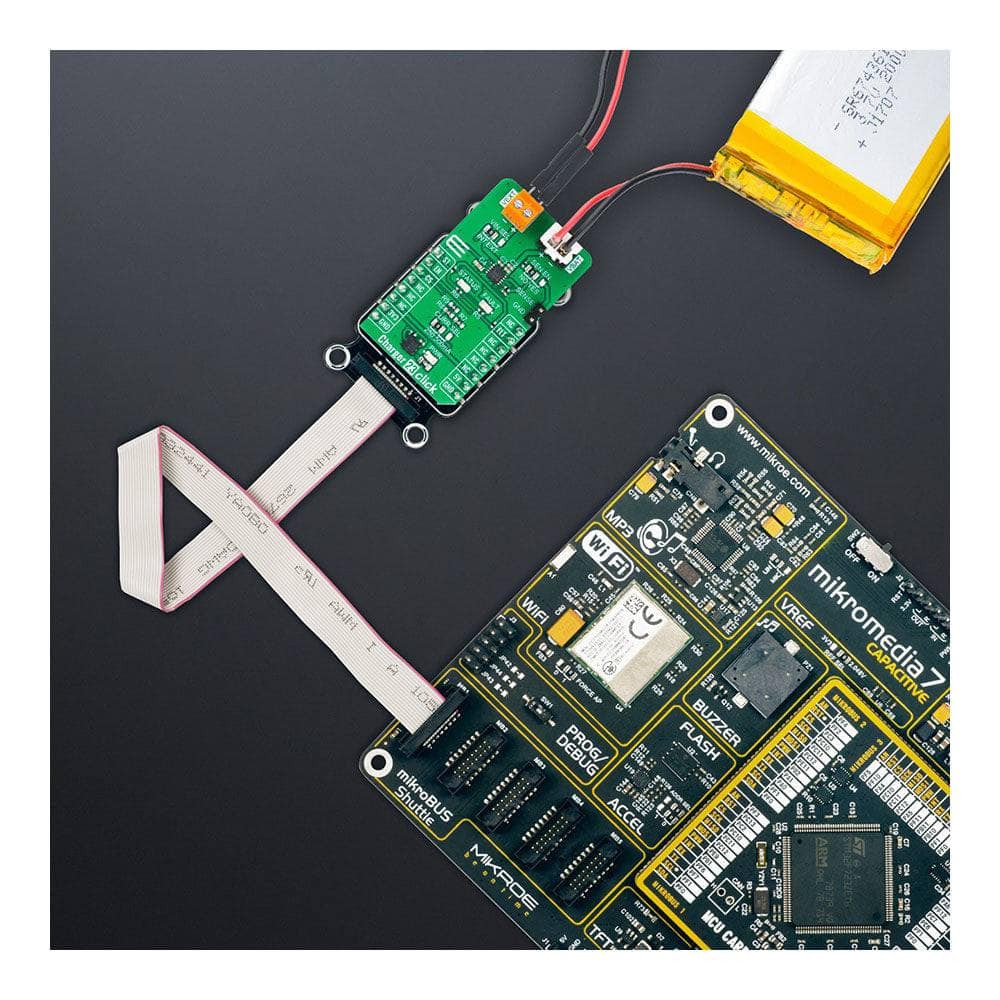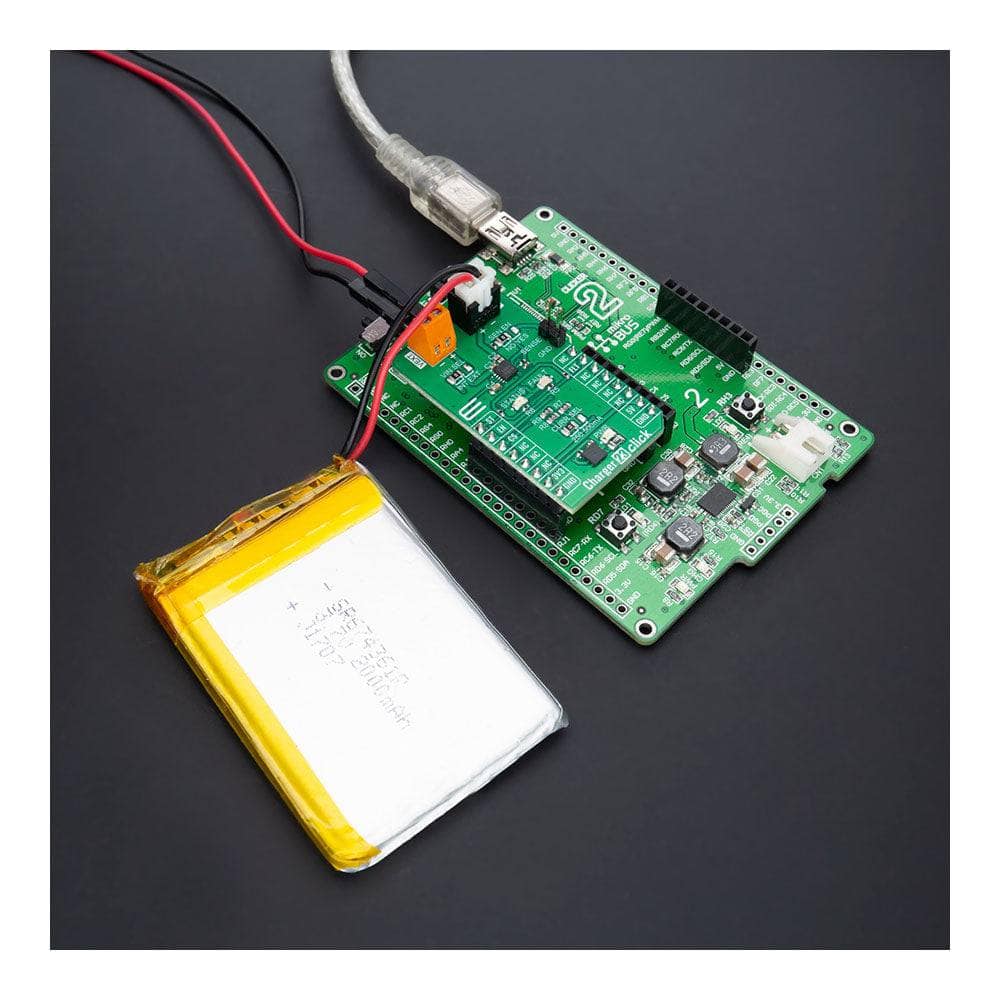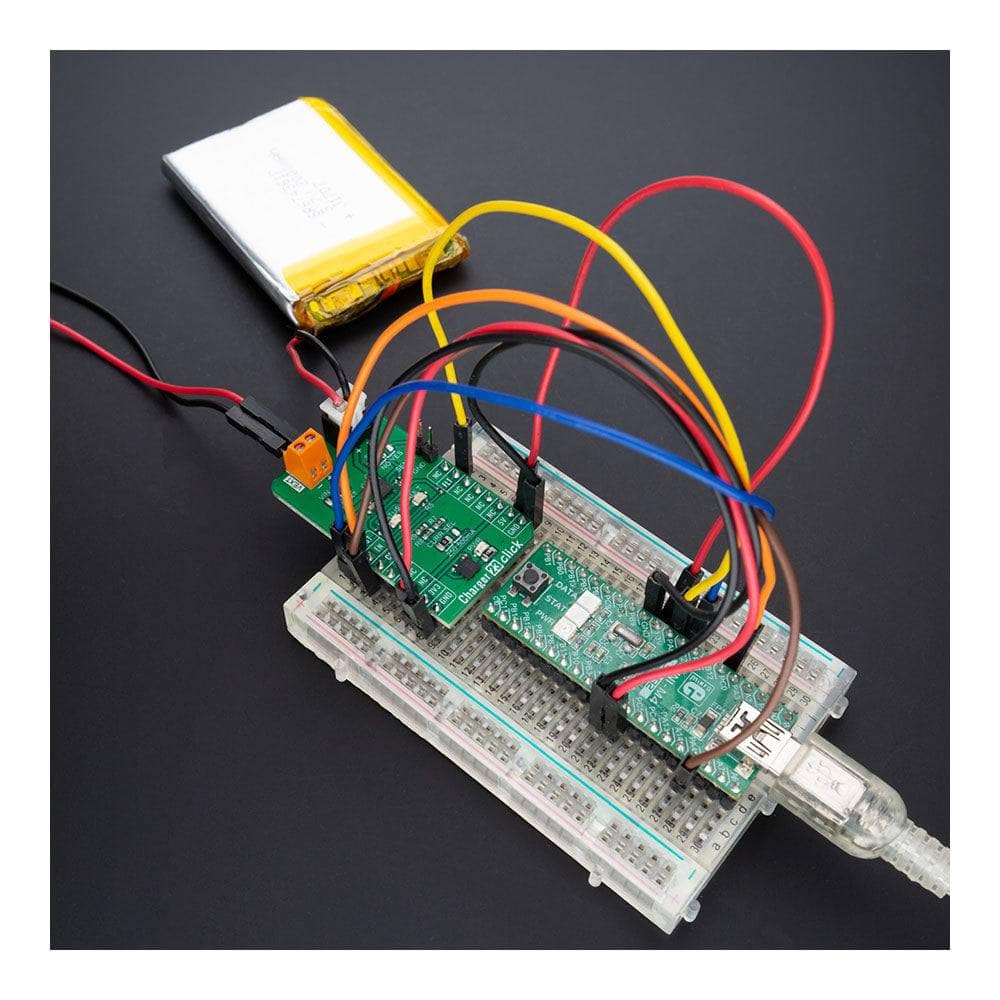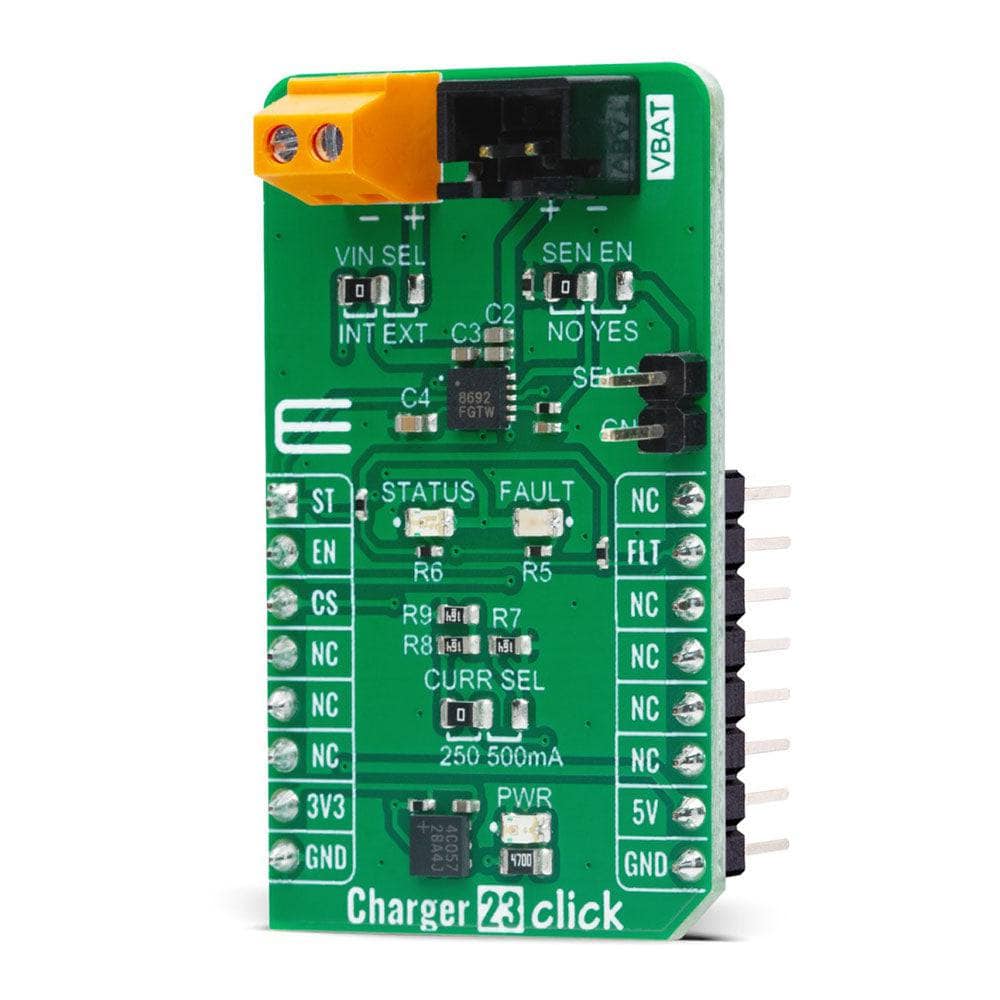
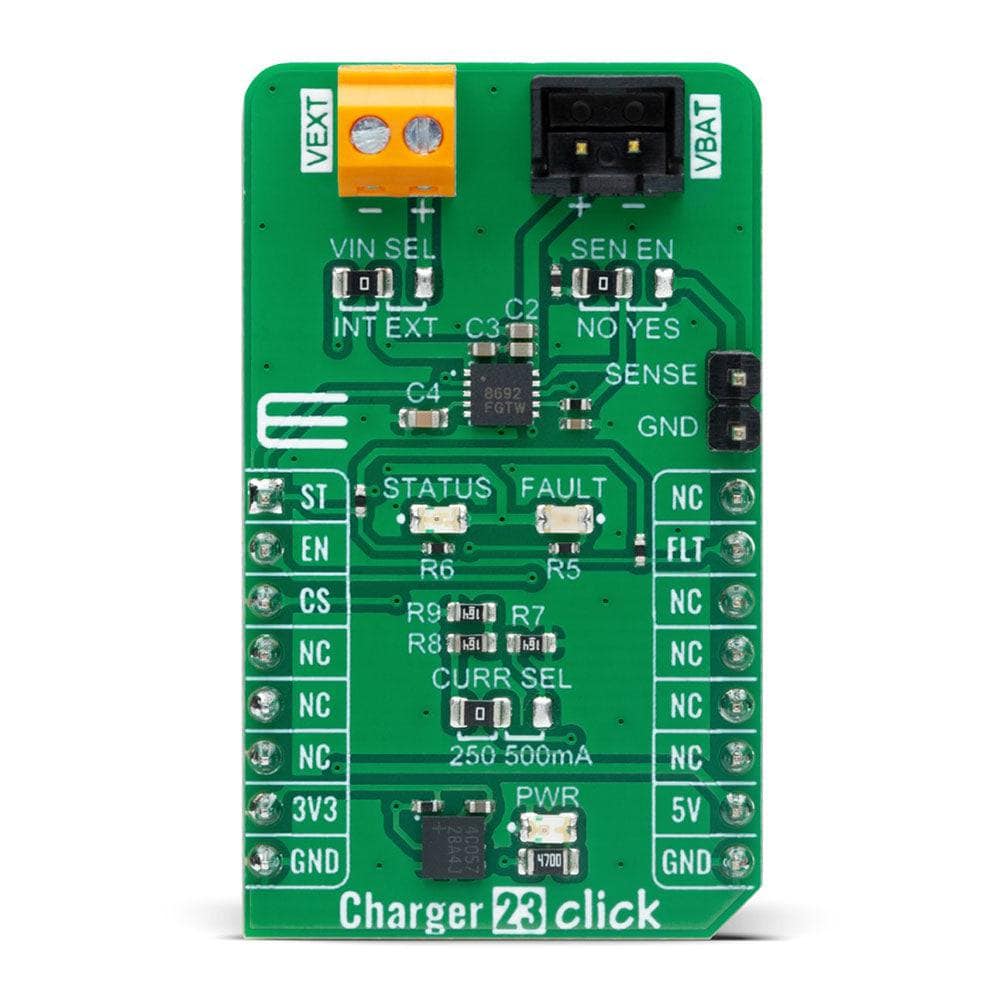
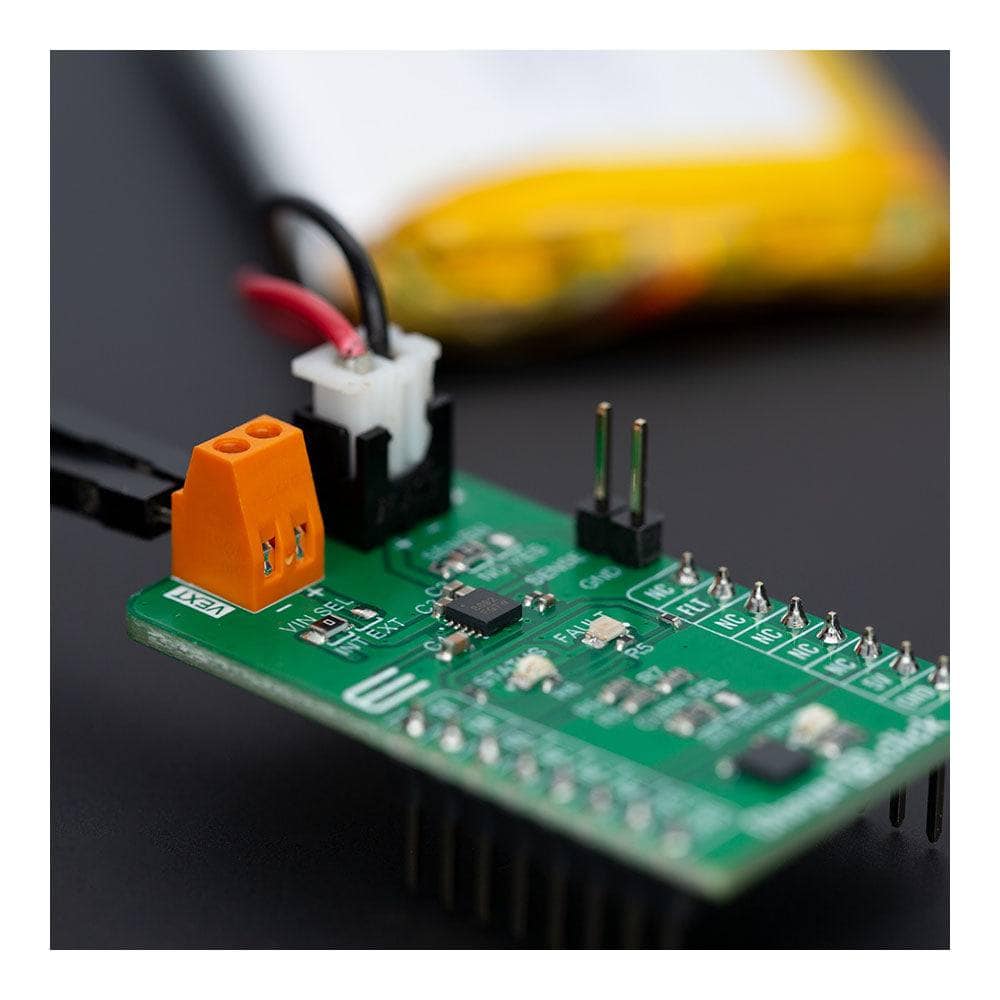
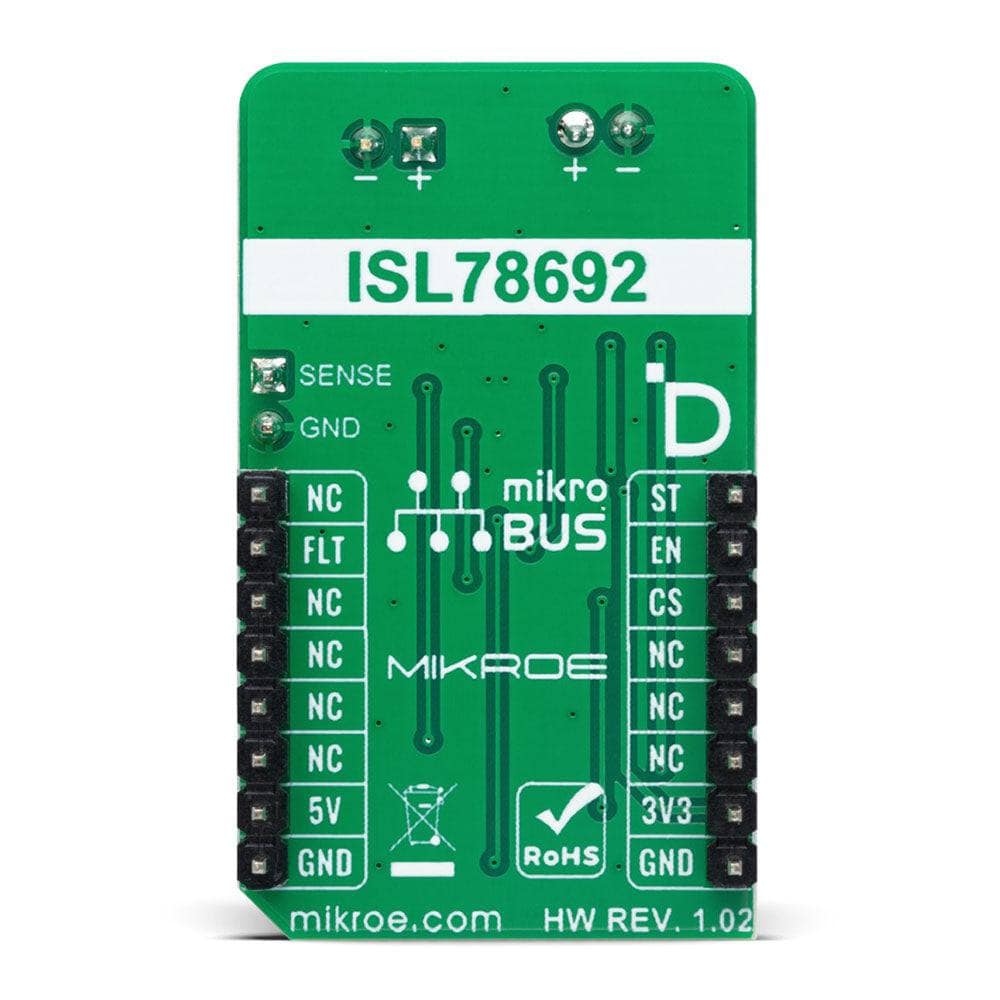
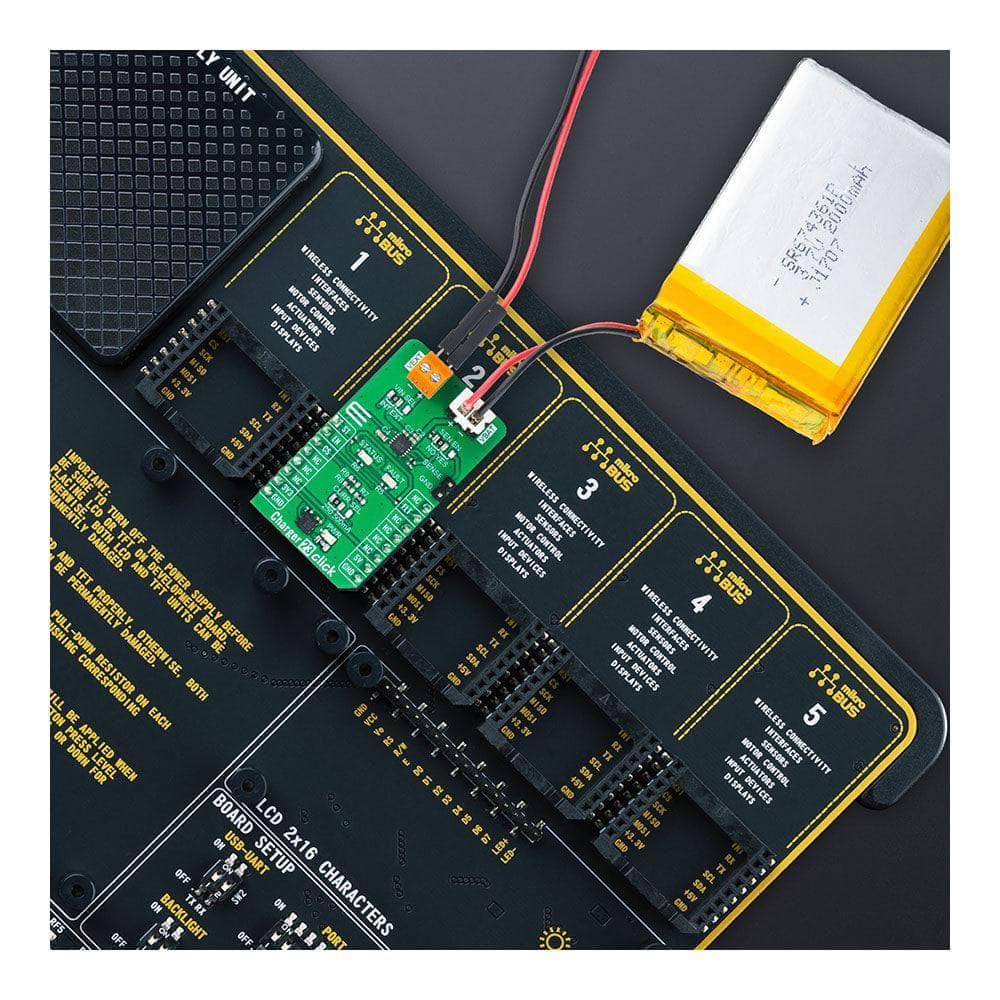
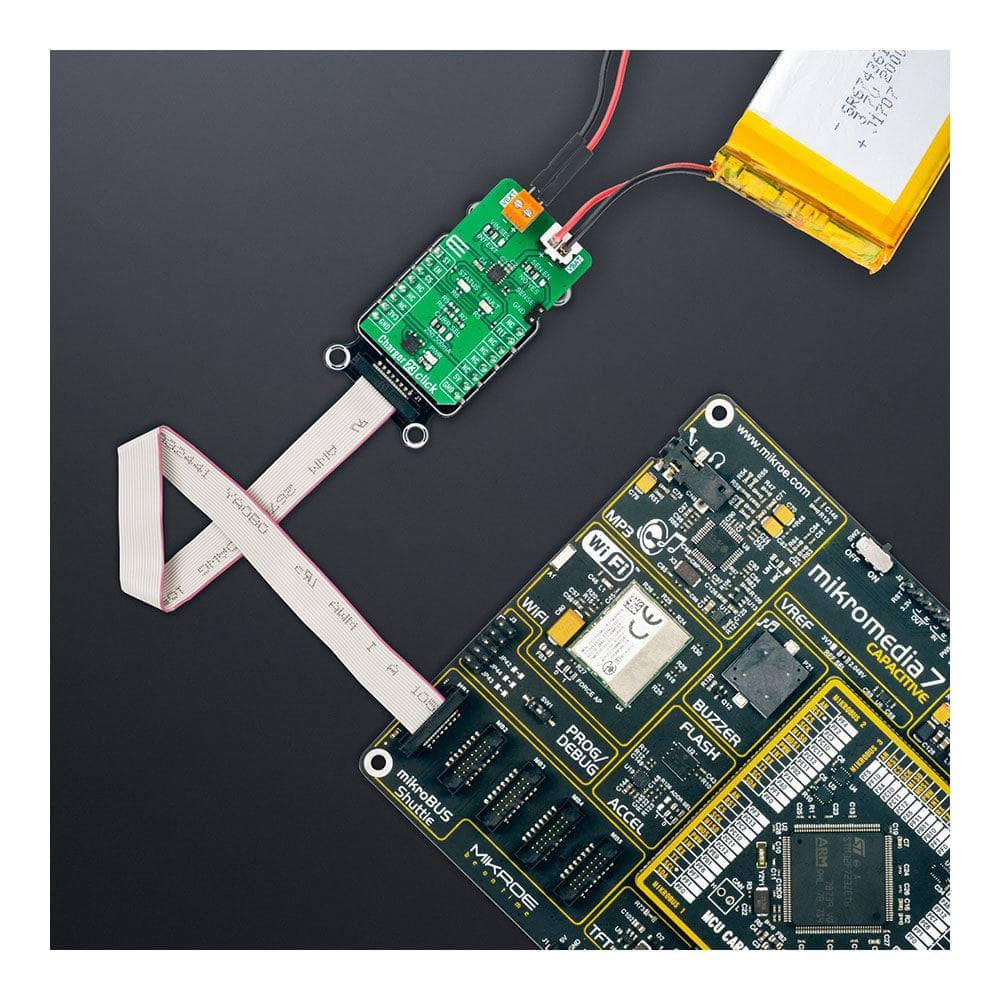
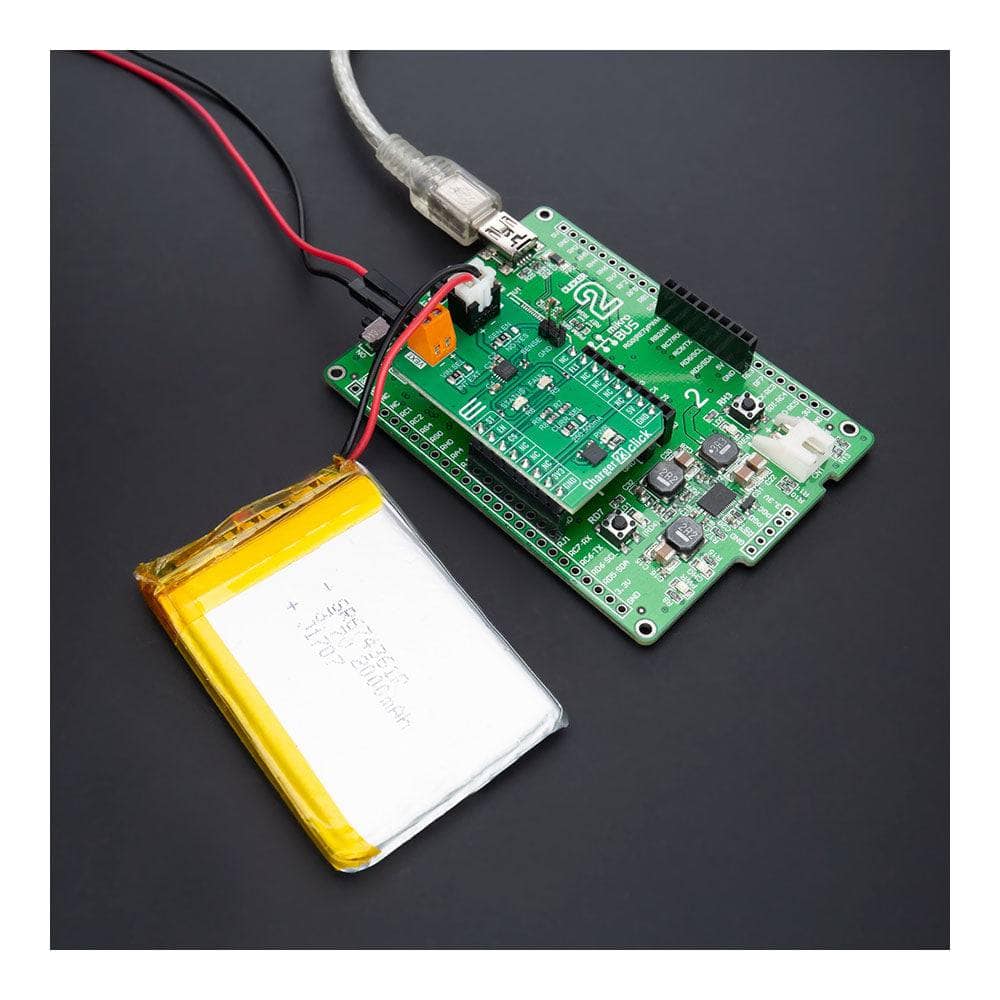
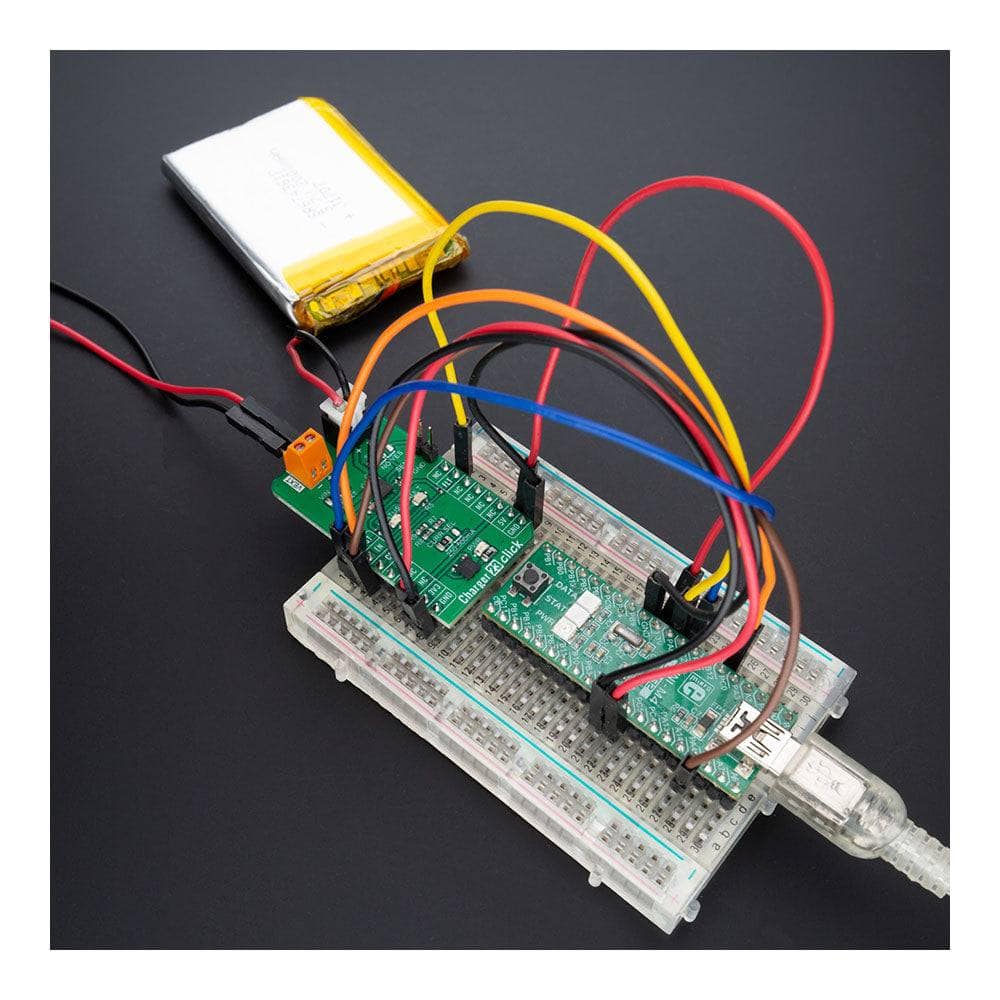
Key Features
Overview
Introducing the Charger 23 Click Board™
Upgrade your portable devices, power tools, and accessories with our compact and reliable Charger 23 Click Board™. This add-on board provides a single-cell battery charging solution, powered by the advanced ISL78693 from Renesas.
Advanced Features
The ISL78693 is a single-cell Li-ion or Li-polymer battery charger that operates with an input voltage as low as 2.6V. With a Constant Current/Constant Voltage (CC/CV) profile, your battery will be charged quickly and efficiently. The charge current is also selectable with an external resistor, allowing for a range between 250 and 500mA.
Additional features include:
- Preconditioning of an over-discharged battery
- NTC thermistor interface for charging the battery in a safe temperature range
- Automatic recharge
- And more
mikroSDK Compliant
Our Charger 23 Click Board™ is supported by a mikroSDK compliant library, making software development a breeze. Plus, with the Click board™ coming fully tested and ready to use on any system equipped with the mikroBUS™ socket, you can start charging your batteries in no time.
Upgrade Your Charging Game Today
Don't settle for slow and inefficient charging solutions. Upgrade to the Charger 23 Click Board™ and experience the convenience and reliability you deserve. Order now and take the first step towards powerful charging capabilities.
Downloads
Présentation du Charger 23 Click Board™
Mettez à niveau vos appareils portables, vos outils électriques et vos accessoires avec notre carte Charger 23 Click Board™ compacte et fiable. Cette carte complémentaire fournit une solution de charge de batterie à cellule unique, alimentée par l'ISL78693 avancé de Renesas.
Fonctionnalités avancées
Le chargeur ISL78693 est un chargeur de batterie Li-ion ou Li-polymère à cellule unique qui fonctionne avec une tension d'entrée aussi basse que 2,6 V. Avec un profil de courant constant/tension constante (CC/CV), votre batterie sera chargée rapidement et efficacement. Le courant de charge est également sélectionnable avec une résistance externe, permettant une plage comprise entre 250 et 500 mA.
Les fonctionnalités supplémentaires incluent :
- Préconditionnement d'une batterie trop déchargée
- Interface de thermistance NTC pour charger la batterie dans une plage de température sûre
- Recharge automatique
- Et plus
Conforme à mikroSDK
Notre chargeur 23 Click Board™ est pris en charge par une bibliothèque compatible mikroSDK, ce qui facilite le développement de logiciels. De plus, la Click board™ étant entièrement testée et prête à l'emploi sur tout système équipé de la prise mikroBUS™, vous pouvez commencer à charger vos batteries en un rien de temps.
Améliorez votre jeu de chargement dès aujourd'hui
Ne vous contentez pas de solutions de charge lentes et inefficaces. Passez au Charger 23 Click Board™ et découvrez la commodité et la fiabilité que vous méritez. Commandez maintenant et faites le premier pas vers des capacités de charge puissantes.
| General Information | |
|---|---|
Part Number (SKU) |
MIKROE-5573
|
Manufacturer |
|
| Physical and Mechanical | |
Weight |
0.02 kg
|
| Other | |
Country of Origin |
|
HS Code Customs Tariff code
|
|
EAN |
8606027385605
|
Warranty |
|
Frequently Asked Questions
Have a Question?
-
Is the Charger 23 Click Board™ ready to use right out of the box?
Yes, the Charger 23 Click Board™ is a fully tested product, and it comes ready to be used on a system equipped with the mikroBUS™ socket. This means that you can start using it immediately without any additional testing or setup required.
-
How easy is it to use the Charger 23 Click Board™?
The Charger 23 Click Board™ is extremely user-friendly and is supported by a mikroSDK compliant library. This library includes functions that simplify software development, making it easy to integrate the Charger 23 Click Board™ into your system.
-
What additional features does the Charger 23 Click Board™ offer?
In addition to the ISL78693's features, the Charger 23 Click Board™ also provides the preconditioning of an over-discharged battery, an NTC thermistor interface for charging the battery in a safe temperature range, automatic recharge, and more.
-
What are some of the key features of the ISL78693?
The ISL78693 offers several valuable features, including an ability to operate with an input voltage as low as 2.6V, a linear charger with the battery charged in a Constant Current/Constant Voltage (CC/CV) profile, and selectable charge current between 250 and 500mA.
-
What is the Charger 23 Click Board™?
The Charger 23 Click Board™ is a compact add-on board that offers a single-cell Li-ion or Li-polymer battery charging solution. It features the ISL78693, a single-cell Li-ion or Li-polymer battery charger from Renesas, and is suitable for use in portable devices, power tools, and more.

